UpFunnel vs Typeform: A Comprehensive Comparison
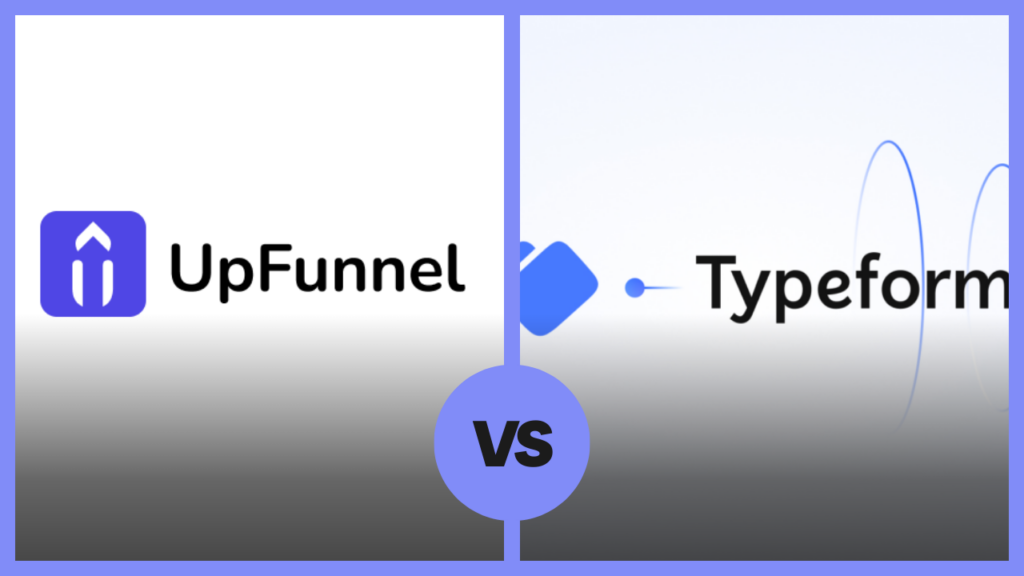
In an increasingly digital business environment, the forms and surveys you deploy represent critical touchpoints with customers and prospects. Yet many organizations may struggle to choose between UpFunnel and Typeform—two leading platforms that approach data collection from distinctly different angles.
What truly separates these popular tools beyond their marketing claims? How do their underlying philosophies impact your ability to collect meaningful data? And most importantly, which platform aligns better with your specific business objectives?
This comprehensive comparison examines these questions across multiple dimensions, from user experience to integration capabilities, revealing how each platform’s unique strengths might serve different organizational needs. Whether your priority is creating beautiful brand experiences or maximizing lead conversion, understanding these fundamental differences will guide you toward the right investment for your digital strategy.
UpFunnel vs Typeform at a Glance 🔍
| Feature | UpFunnel | Typeform |
| Ease of Use | ✅ Moderate learning curve with comprehensive resources | ✅ Intuitive interface with minimal learning curve |
| Design & Aesthetics | ✅ Professional templates with multiple layout options, matching brand | ✅ Beautiful, minimalist designs with strong visual appeal |
| Logic & Branching | ✅ Advanced conditional logic with segmentation capabilities | ✅ Smart branching with “Logic Jump” feature |
| Analytics | ✅ Advanced analytics | ✅ User-friendly metrics on completion rates and engagement |
| Pricing | ✅ Subscription model based on responses | ✅ Subscription model based on responses and forms |
| Free Plan | ✅ Limited lead generation features | ✅ Basic forms with response limitations |
| Integrations | ✅ Broader ecosystem with hundreds of app connections | ✅ Broader ecosystem with hundreds of app connections |
| Mobile Experience | ✅ Fully responsive with dedicated mobile optimization | ✅ Excellent native mobile experience |
| A/B Testing | ✅ Soon | ❌ Requires workarounds or third-party tools |
| Customer Support | ✅ | ✅ |
| Best Use Case | Marketing teams focused on lead generation and E-commerce conversions | Brand-conscious companies prioritize user experience |
User Experience & Design 🎨
Typeform has built its reputation on beautiful, conversational forms that feel like natural dialogue. Their one-question-at-a-time approach creates a focused, distraction-free experience that often results in higher completion rates. The platform’s sleek, minimalist aesthetic has made it a favorite among design-conscious brands. Typeform’s attention to visual details and smooth animations creates an almost cinematic experience that keeps users engaged throughout the form-filling process.
UpFunnel takes a different approach by emphasizing flexibility in form presentation. While offering conversational formats similar to Typeform, UpFunnel also provides traditional multi-question layouts and hybrid options. This versatility allows businesses to match their form style to specific use cases rather than committing to a single format. For companies that need different form types across various customer touchpoints, this adaptability offers significant advantages.
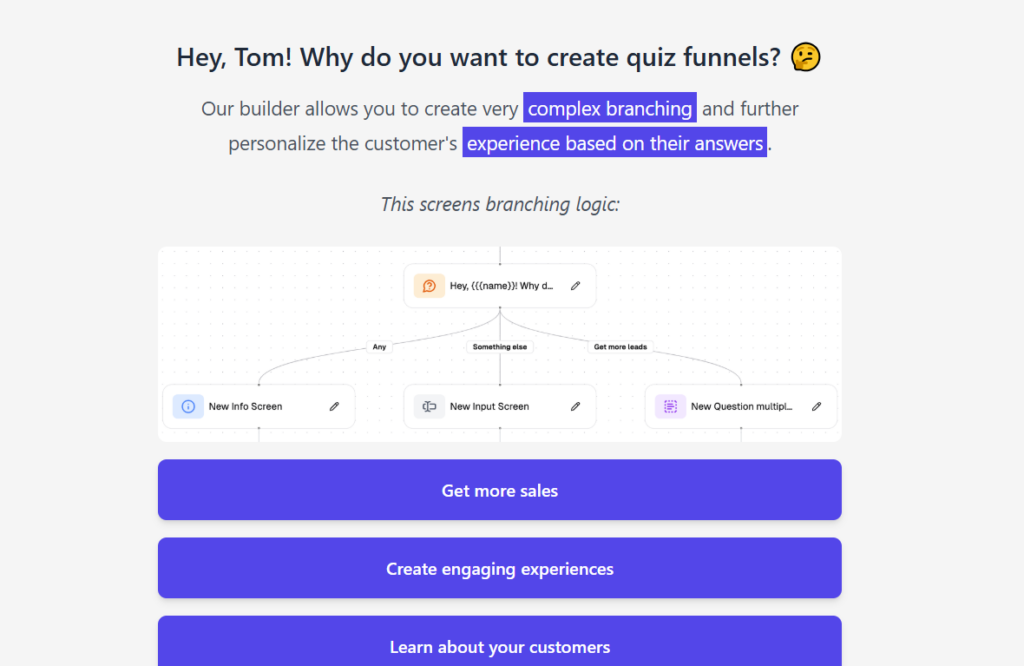
Feature Set & Personalization 📲
Typeform excels in creating engaging experiences with:
- A conversational flow that feels natural and intuitive
- Branching logic that creates personalized paths through questions
- Hidden fields for tracking data and customizing the experience
- Robust integration capabilities with popular tools
- Advanced design customization options with custom CSS on higher tiers
- A “Logic Jump” feature that adapts questions based on previous answers
- Impressive media embedding capabilities that enhance engagement
Typeform’s strength lies in its ability to transform mundane data collection into memorable interactions. Their attention to user psychology and engagement makes forms feel less like paperwork and more like conversations, which can significantly improve response quality, especially for feedback and survey use cases.
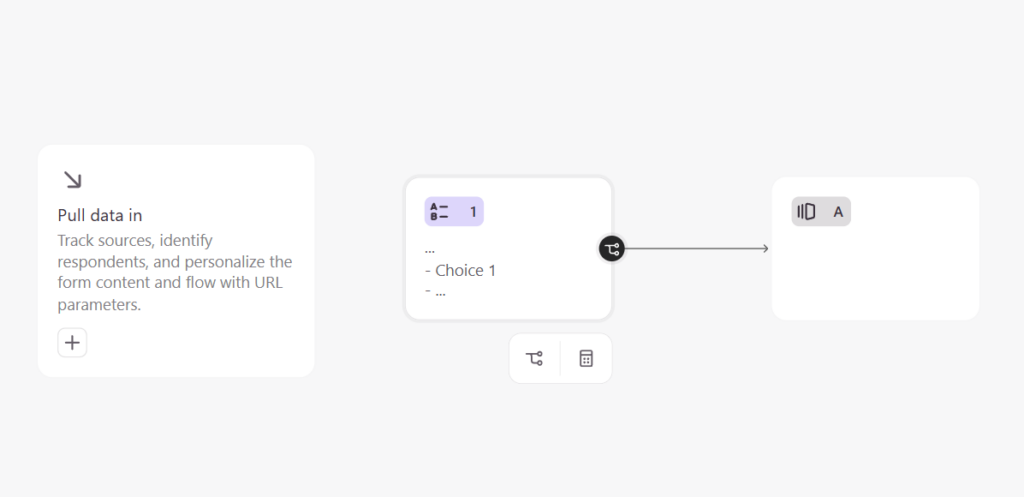
UpFunnel distinguishes itself with:
- Dynamic content personalization based on user attributes and behavior
- Multi-step funnels designed specifically for lead generation
- Advanced segmentation capabilities for targeted marketing
- Comprehensive analytics dashboards with conversion tracking
- Stronger focus on conversion optimization features
UpFunnel’s personalization engine allows marketers to create truly individualized experiences that can increase conversion rates. By leveraging user data and behavior patterns, forms can adapt to different segments, creating more relevant experiences for each visitor type.
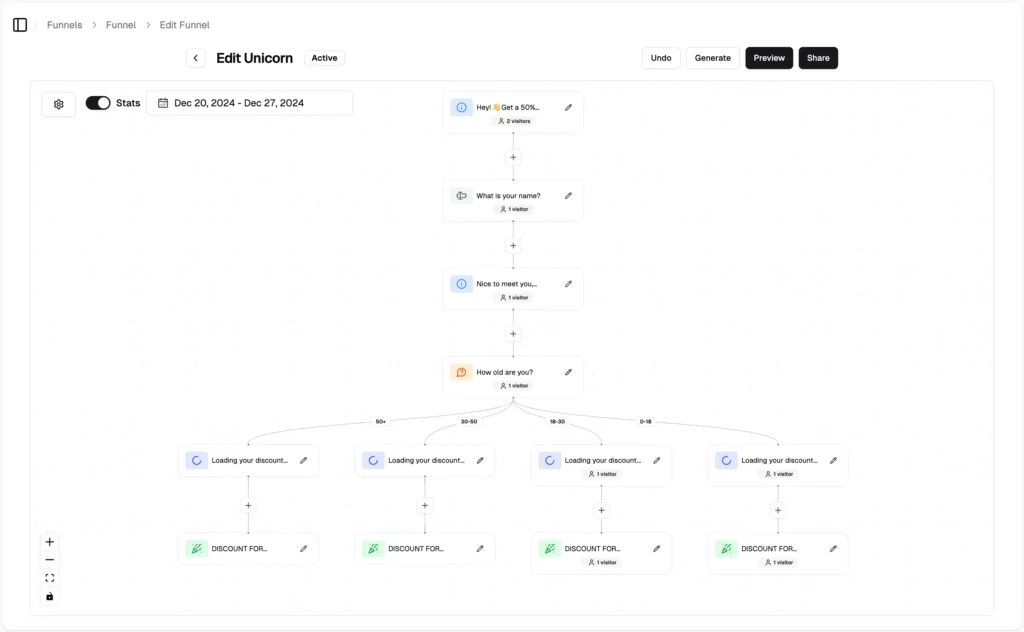
Pricing Structure 💰
Typeform operates on a tiered pricing model based on the number of responses and forms. Their free plan allows for basic forms but limits responses and features. Premium plans unlock more advanced features but can become expensive for high-volume users. This model works well for businesses focused on quality over quantity, such as customer research initiatives or feedback programs.

UpFunnel also uses a response-based pricing structure but generally offers competitive rates at comparable tiers. Both platforms increase costs as volume grows, but UpFunnel typically provides higher response limits per price point, making it economical for businesses expecting larger submission volumes. Their plans also tend to include marketing-focused capabilities at entry-level tiers compared to Typeform’s equivalent offerings. This pricing advantage, combined with conversion-oriented features, makes UpFunnel particularly attractive for organizations running high-volume lead generation campaigns where cost per submission directly impacts marketing ROI.
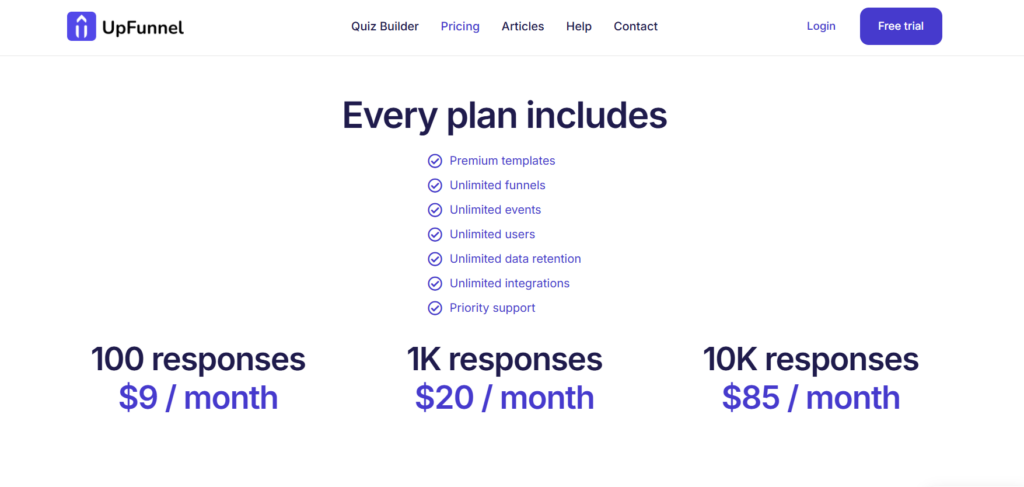
Integration Capabilities 🌟
Typeform connects with a wide range of applications through both native integrations and third-party services like Zapier and Make (formerly Integromat). Their ecosystem includes direct connections to popular tools like Slack, Google Sheets, and several CRM platforms, while their API access on higher tiers enables custom integrations for more specific requirements.
UpFunnel follows a similar integration strategy, also utilizing Zapier and Make as their primary connection methods to thousands of external applications. The platform offers comparable integration capabilities to Typeform, with the main difference being fewer built-in native connections to certain CRMs. However, since both rely heavily on the same third-party integration platforms, the practical difference in connectivity options is minimal for most use cases. Organizations can expect similar workflow automation possibilities with either choice, particularly if they’re already leveraging Zapier or Make to connect their tech stack.
Analytics and Reporting 📊
Typeform provides solid analytics on completion rates, time spent, and drop-off points. Their visualization tools make it easy to spot trends and identify areas for improvement. For survey and research use cases, their analytics package offers valuable insights into response patterns, helping organizations draw meaningful conclusions from their data. Their question-level analytics are particularly helpful for refining individual items to improve clarity and response quality.
UpFunnel takes analytics a step further with conversion tracking and downstream impact analysis. Their platform is designed to help businesses understand not just form performance but also the impact on sales and marketing efforts. For lead generation campaigns, these business-oriented metrics provide a clearer picture of form effectiveness beyond simple completion rates. Their cohort analysis tools help identify which user segments respond best to different form strategies.
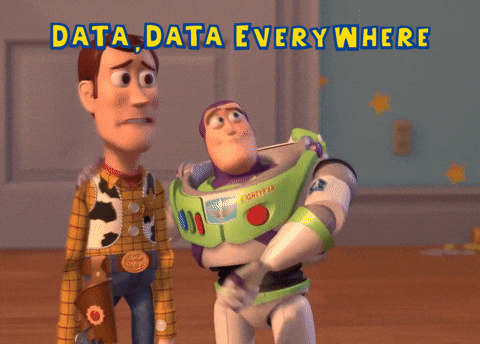
Learning Curve 💡
Typeform is renowned for its intuitive interface that allows even beginners to create professional-looking forms quickly. Their templates and drag-and-drop editor make the learning process smooth. For organizations without dedicated technical resources, this accessibility enables rapid deployment without extensive training. Their extensive template library provides excellent starting points for nearly any use case.
UpFunnel requires a bit more time to master due to its expanded feature set, but offers comprehensive tutorials and customer support resources to help users leverage its full capabilities. Their onboarding process includes guided implementation for more complex features, ensuring organizations can take full advantage of the platform’s marketing capabilities. For teams that can invest in the learning curve, the advanced functionality often justifies the initial time investment.
Use Case Strengths 🎯
Typeform particularly excels at:
- Customer satisfaction surveys and feedback collection
- Research projects requiring qualitative data
- Brand-conscious experiences where design quality matters
- Interactive quizzes and assessments
- Simple lead capture where user experience is paramount
- Educational content and knowledge checks
UpFunnel shows its strengths in:
- Complex lead generation campaigns
- Multi-stage qualification processes
- High-volume lead capture with qualification
- Marketing campaigns requiring sophisticated segmentation
- Sales processes with multiple decision paths
- Integration-heavy workflows with marketing automation
Conclusions 🤝
Typeform remains the gold standard for beautiful, conversational forms that prioritize user experience and design. Its focus on creating engaging, memorable interactions makes it the ideal choice for organizations that value aesthetics and respondent experience. For surveys, feedback collection, and situations where form completion quality matters more than quantity, Typeform offers an unmatched combination of design excellence and functional simplicity.
UpFunnel shines brightest for businesses focused on lead generation and conversion optimization. Its specialized features for marketing use cases create a complete solution for organizations using forms as part of their sales and marketing processes. For companies that need to collect, qualify, and route leads efficiently, UpFunnel’s marketing-centric approach and robust analytics provide significant advantages.
Both platforms offer compelling solutions with distinct strengths. The right choice depends on your specific goals, technical requirements, and how forms fit into your broader business strategy. By understanding the unique advantages of each platform, you can select the tool that best aligns with your organization’s needs and objectives.




